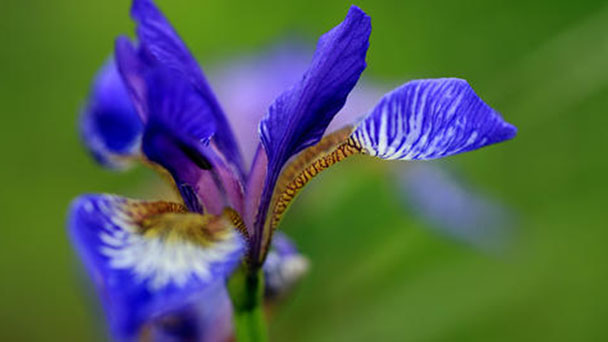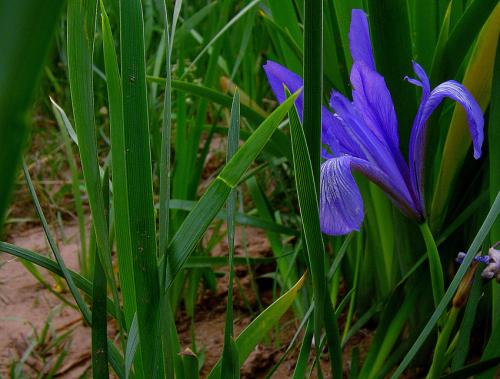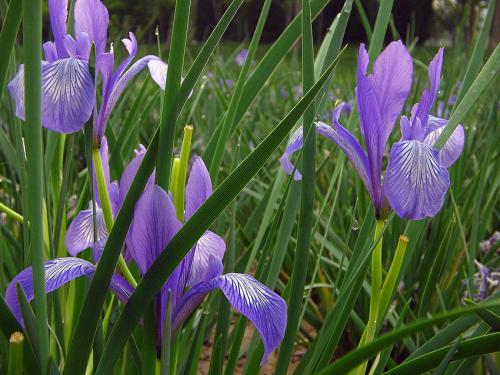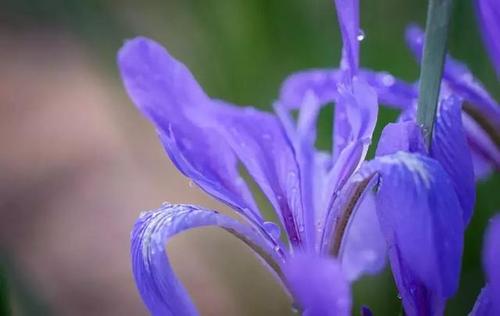Indian aster (Kalimeris indica) profile
Written by Maggie
Mar 18 2021

Indian Aster, also known as Indian Kalimeris, Kalimeris indica, is a kind of composite perennial herbs. Indian Aster has the effect of clearing away heat and detoxification, eliminating food, relieving urine, dispersing blood stasis and stopping bleeding. Indian Aster is widely distributed in South and East Asia. At present, it has been cultivated artificially in some large and medium-sized cities in China. Its young leaves are usually eaten as vegetables, commonly known as "Indian Aster Head". Indian Aster has become a popular green leaf vegetable in the market in early spring and autumn. There are also irises and sedges of the same name.
Indian Aster is a perennial herbaceous plant, erect tuft, plant height (that is, leaf length) about 30 cm, leaf width about 6 mm, blue purple flowers four or five open, natural distribution is very wide. indian aster has developed roots, strong resistance and adaptability, and salt and alkali resistance. These characteristics determine that Indian Aster is suitable for water and soil conservation and greening reconstruction of saline-alkali land in dry and sandy areas of northern China.
Indian Aster picture

Morphological characteristics of Indian Aster
Indian Aster (Kalimeris indica (Linn.) Sch.) is a perennial herb, underground slender rhizome, prostrate prostrate, white knot. Early spring only basal leaves, stem is not obvious, early summer on the ground stem heightens, the base of the green purple, smooth glabrous. Leaves alternate nearly sessile, leaf obovate, elliptic to lanceolate. Indian Aster blossoms in late autumn, with flower heads. Achene of Indian Aster is flat, obovate, less crested, weak and easy to fall off. Stems are erect, 30-80 cm tall. Indian Aster leaves are lanceolate, obovate-oblong, 3 -- 7 cm long, 1 -- 2.5 cm wide, margin with 2 -- 4 pairs of shallow teeth above middle, upper leaves small, entire. Inflorescences are cymbose, involucre hemispherical, 6 -- 9 mm in diameter, involucre 2 -- 4 layers. Margin is liguulate, purple;Inner flowers tubular, yellow.
Ecological habits of Indian Aster
Indian Aster is fond of fertile soil, resistant to drought and waterlogging. It is a common weed in vegetable gardens, fields and roadsides.
Propagation of Indian Aster flowers
The propagation methods of Indian Aster are divided into seed propagation and plant propagation. Seed propagation is generally not used because of the difficulty of seed collection and very low seedling emergence rate. The method of Indian Aster division propagation (vegetative propagation) is not only simple and feasible, with low cost and high survival rate, but also can be harvested in the same year when the seeds are collected and planted. With proper management, the cost can be recovered in the same year and there is a slight surplus. The method is to dig Indian Aster seed roots with a shovel or hoe in the field in autumn, break the big seed coat into several small seed roots with main branches and roots. Each small seed root has 3 to 4 Indian Aster main stems, and then transplant them into the field at a row spacing of 10cm×10cm. When transplanting, the seed roots should be compacted so that they are tightly bound to the soil. After planting to timely pouring water, prevent wilting, in order to improve the survival rate.
There are many varieties of Indian Aster, but 3 varieties and 3 varieties are common. To the field shovel seeds to collect those stubby reddish rhizomes, plants creeping growth, dark green leaf color, obovate oblong or oblanceolate leaves, leaf margin teeth or pinnately lobed plants. Only by selecting varieties with good regeneration, fast growth, wide adaptability, easy cultivation, strong resistance to adversity, environmental protection (no need to control pests and diseases) and fresh fragrance and delicacy can we ensure the Indian Aster head with high quality, high yield and good benefit. This is one of the key technical aspects of a good Indian Aster.
Disease control of Indian aster
Indian Aster is highly resistant to pests and diseases and is generally free of pests and diseases.
In the Hengshui area, Indian Aster is often harmed by small ground tigers. The small ground tiger occurs three generations a year. The young larvae eat the leaves into holes and notches, while the older larvae hide in the soil at root during the day.
Chemical control
The best control effect was achieved before the 3rd instar of larvae.
Add 5% phoxim particles to fine soil 30 times, mix them well and spread them evenly on the lawn. Or spray 50% phoxim liquid 1000 times liquid.
Biological control
Black light lamps or sweet and sour liquid lures kill adult insects.
Place a large tank of water under the lamp and sprinkle oil on the water surface.
The configuration method of sweet and sour liquid is: brown sugar 1, vinegar 3, water 10, join a small amount of trichlorfon liquid stirring evenly. In the evening when there is no wind and clear weather, the moths are placed among the seedlings. After dawn, the moths are collected and buried deep.
After the Indian Aster is gnawed, the upper leaf death, after prevention and treatment can also drill out of the base of the new leaf, to restore the vitality of the past.

The distribution of Indian aster
Indian Aster is widely distributed in the eastern, central, western, southern and southern regions of China. There are also Indian Asters in northern China, and they are widely planted in Dongying, Shandong Province. The varieties in this area have good alkali resistance and are excellent crops for alkaline land greening. Indian Aster has beautiful purple or yellow flowers in spring. Dongying Bohai Horticulture Company has a large number of planting.
Indian aster uses
Medical uses
Indian Aster can clear heat and detoxify, dissipate stasis and stop bleeding, enhance dampness, dissipate food and eliminate accumulation. Indian Aster can treat cold, fever, cough, acute pharyngitis, tonsillitis, epidemic mumps, infectious hepatitis, gastric and duodenal ulcers, infantile malnutrition, enteritis, dysentery, vomiting blood, breakage and leakage, irregular menstruation; Indian Aster has external use to treat boils swelling pain, mastitis, trauma bleeding; Dysentery or damp-hot diarrhea; Sore throat, carbuncle swelling sore choice; Blood heat epistaxis, hematochezia; Damp-heat jaundice; Or edema, urine adverse; Food stagnation, abdominal distension.
Edible value
The young above-ground stems and leaves of Indian Aster can be eaten as a nutritious vegetable. Indian Aster can be fried food, salad or soup, rich fragrance, nutrition. Indian Aster is native to South and East Asia. Indian Aster is very common throughout China, so the Yangtze River Basin is widely distributed. The custom of eating Indian Aster in spring has long been established in all parts of China.
The economic value
Indian Aster has been widely cultivated in China since ancient times, and has been recorded in Confucius' Family Language, Qu Yuan's Li SAO, and Li Shizhen's Compendium of Materia Medica, etc. As an excellent soil and water conservation, Indian Aster has a place in history and nature for grazing, ornamental and medicinal plants.
Greening function
Indian Aster has developed roots, abundant leaves, strong adaptability to the environment, vigorous growth and extensive management. It is an excellent ornamental ground cover with water saving, drought resistance, salt and alkali resistance, resistance to weeds, diseases, insects and rodents.

Latest Updated
- Benefits of Bugleweed - 7 Science-backed Health Benefits
- Bugleweed Dangers & Side Effects - Is It Poisonous?
- How to Plant Evergreen Trees - What You Should Know
- When to Plant Evergreens - Grow Guide for Evergreen Trees
- 12 Wonderful Evergreen Shrubs for Your Garden
- 12 Popular Evergreen Plants with Pictures for Beginners
- When And How To Prune A Lilac Bush Like a Pro
- How to Grow & Care for Lilac Vine (Hardenbergia Violacea)
- Japanese Lilac Tree (Syringa Reticulata) Care & Propagation Guide
- Shumard Oak Pros and Cons - What to Know
Popular Articles
- Winter maintenance of Antirrhinum Majus
- How to Grow Terminalia Mantaly Tree
- How to Grow and Care for Crossostephium Chinense
- How to grow Antirrhinum Majus in spring
- Peristeria Elata (Dove Orchid) Profile: Info & Care Guide
- Underwatered Snake Plant (Sansevieria Trifasciata) - Signs And How To Fix
- How to Care for Brazilian Jasmine Plant (Mandevilla Sanderi)
- How to Grow & Care for Graptopetalum Purple Delight in Summer
- Rosa Chinensis (China Rose): Plant Growing & Care Tips
- How to Care for Baby Sun Rose (Aptenia Cordifolia)